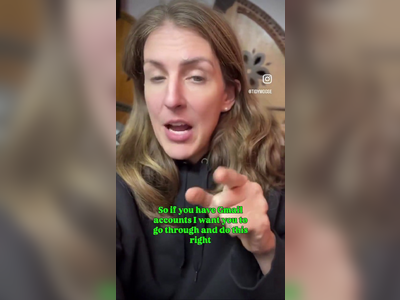Total Solar Eclipse of 2021: 32 Million Witness the Mystical, $1.5bn Spectacle Sweep Across North America
A total solar eclipse, a rare celestial event, occurred on Monday, August 21, 2017, sweeping across North America.
Approximately 32 million people were in the path of totality, witnessing the moon's shadow cross the Mexico-Texas border and traverse 15 states.
The ethereal experience was denied to many due to low clouds and rain.
Those who saw it were treated to a remarkable and emotional display, with cities experiencing sudden darkness, a drop in temperature, and the stillness of twilight in the middle of the day.
The next solar eclipse of this magnitude in the US will not occur until 2044.
A total solar eclipse, where day turns to night and animals behave differently, is a mysterious and mystical experience according to Pam Melroy, deputy head of NASA and a retired astronaut.
This event drew in an estimated 4-5 million Americans to travel and witness it, making it the country's biggest travel day of the year with an estimated $1.5bn economic boost.
Many were up early to secure their viewing spots, and cities held watch parties and distributed free eclipse glasses.
Joe Biden from the White House also urged Americans to safely view the eclipse.
The Dallas-Fort Worth region in north Texas was a popular destination for the solar eclipse due to being in the path of totality.
However, cloudy weather caused last-minute changes for some viewers.
Despite this, many experienced clear skies and nearly four minutes of darkness.
A traveler from Lithuania, Ignas Barauskas, described it as "better than all expectations." However, the high demand led to expensive air fares, hotel rates, and canceled bookings being resold at inflated prices.
Several states and municipalities declared emergencies due to the expected large crowds.
The solar eclipse in North America occurred peacefully, despite warnings of increased terror threats.
Nasa live-streamed the event for those unable to view it directly or outside the path of totality.
The entire continent experienced a partial eclipse, with varying degrees of coverage depending on proximity to the center track.
Nasa conducted experiments, including launching rockets into the moon's shadow to study the impact on Earth's upper atmosphere and communications systems, and enlisted citizen volunteers to capture and analyze images of the solar corona during totality.
Additionally, researchers and volunteers observed animal behavior at several zoos during the eclipse.
A recent total solar eclipse caused various reactions among animals during previous occurrences, but zebras at Dallas zoo showed little interest.
The eclipse in the US in 2017 had an interval of only seven years, but this one had a longer track and wider shadow of totality due to the moon being closer to Earth.
The duration of totality was longer, with four minutes and 28 seconds in Torreón, Mexico, and between three and a half to four minutes in most places along the path.
The next total solar eclipse will be on August 12, 2026, and will cover large areas of the northern hemisphere, with totality limited to Greenland, Iceland, Spain, Russia, and a small area of Portugal.
On a specific date, the UK will experience a partial eclipse with over 90% coverage.
In contrast, residents of the mainland US will have to wait until August 22, 2044, to witness a total eclipse, which will be visible in North and South Dakota, Montana, and northern Canada.
After this, the next coast-to-coast total eclipse in the US will occur on August 12, 2045, stretching from California to Florida.
The ethereal experience was denied to many due to low clouds and rain.
Those who saw it were treated to a remarkable and emotional display, with cities experiencing sudden darkness, a drop in temperature, and the stillness of twilight in the middle of the day.
The next solar eclipse of this magnitude in the US will not occur until 2044.
A total solar eclipse, where day turns to night and animals behave differently, is a mysterious and mystical experience according to Pam Melroy, deputy head of NASA and a retired astronaut.
This event drew in an estimated 4-5 million Americans to travel and witness it, making it the country's biggest travel day of the year with an estimated $1.5bn economic boost.
Many were up early to secure their viewing spots, and cities held watch parties and distributed free eclipse glasses.
Joe Biden from the White House also urged Americans to safely view the eclipse.
The Dallas-Fort Worth region in north Texas was a popular destination for the solar eclipse due to being in the path of totality.
However, cloudy weather caused last-minute changes for some viewers.
Despite this, many experienced clear skies and nearly four minutes of darkness.
A traveler from Lithuania, Ignas Barauskas, described it as "better than all expectations." However, the high demand led to expensive air fares, hotel rates, and canceled bookings being resold at inflated prices.
Several states and municipalities declared emergencies due to the expected large crowds.
The solar eclipse in North America occurred peacefully, despite warnings of increased terror threats.
Nasa live-streamed the event for those unable to view it directly or outside the path of totality.
The entire continent experienced a partial eclipse, with varying degrees of coverage depending on proximity to the center track.
Nasa conducted experiments, including launching rockets into the moon's shadow to study the impact on Earth's upper atmosphere and communications systems, and enlisted citizen volunteers to capture and analyze images of the solar corona during totality.
Additionally, researchers and volunteers observed animal behavior at several zoos during the eclipse.
A recent total solar eclipse caused various reactions among animals during previous occurrences, but zebras at Dallas zoo showed little interest.
The eclipse in the US in 2017 had an interval of only seven years, but this one had a longer track and wider shadow of totality due to the moon being closer to Earth.
The duration of totality was longer, with four minutes and 28 seconds in Torreón, Mexico, and between three and a half to four minutes in most places along the path.
The next total solar eclipse will be on August 12, 2026, and will cover large areas of the northern hemisphere, with totality limited to Greenland, Iceland, Spain, Russia, and a small area of Portugal.
On a specific date, the UK will experience a partial eclipse with over 90% coverage.
In contrast, residents of the mainland US will have to wait until August 22, 2044, to witness a total eclipse, which will be visible in North and South Dakota, Montana, and northern Canada.
After this, the next coast-to-coast total eclipse in the US will occur on August 12, 2045, stretching from California to Florida.








